 In the centuries before the iconic Bialetti Mokka pot, people drank the new beverage in coffeehouses, an idea that started in Constantinople around 1550, but also spread to Mecca, Damascus and Cairo. Although David ibn Abi Zimra (a Cairo rabbi) ruled in 1553 that Jews could drink coffee prepared by a non-Jew, he also warned against patronizing public coffeehouses and suggested that instead, they have their coffee deliver to their homes--especially due to its medicinal use. Initially, in the 15th century, the drink quickly spread throughout the Ottoman Empire, enjoyed with large amounts of sugar. Jews and Muslims alike found that it helped them stay awake and alert for nightly prayer services. For Muslims, it took the place of forbidden alcoholic beverages. For the Jews, its adoption was tentative with rabbis debating whether it was Kosher, what blessing it required or whether it was actually a medicinal drug. Coffee in Italy had a slow start, partly due to it being declared a Drink of the Devil by the Catholic church, and because it was a very expensive drink for the elite. It wouldn't be until 1603 when Pope Clement VIII tasted--and liked--coffee and gave the drink full absolution from its sins. This helped open the floodgates for coffee in Italy and the rest of Europe. In 1632, the Jews of Livorno--a port city that was given over to the Italian Jewish population which became a center of Mediterranean trade--imported the first coffee into Italy and then opened the first coffeehouses (Bottega del Caffè). By 1624 and 1650, large shipments were shipped to Venice and by 1683, the first coffeehouse in Venice opened. In researching this article, I actually discovered that in 1766, an ancestor with my family name, Beniamino Finzi (an Italian Jew) was given management of a coffeehouse in Livorno. He managed to get the Jewish leaders to rescind a law forbidding games of chance in coffeehouses frequented by Jews. He was the first Jew to be granted a permit to allow gambling with card and board games in a coffeehouse. From this time on, a Jew could only run an "entertainment room" for gambling only if they also served coffee! Coffee was becoming mainstream.... within 200 years of the first sip being tasted in Italy, the craving for coffee had spread throughout Europe and even into the New World. --Jerry Finzi
0 Comments
As an advertising photographer, at times in my career I had to create art using food--fresh food, cooked food--often using strange food stylist techniques to make the food look its best (brushing steak sauce on a near-raw turkey and torching it), to last longer (using mashed potatoes in place of a scoop of melting ice cream), or making soups more appealing (marbles under the ingredients so they show). In drinks we used non-melting, hand sculpted acrylic ice cubes and silver cards behind to reflect the color. But for my more artistic work, I loved using food in surrealistic ways... huge tomatoes sitting atop a lamp table in a miniature set, or a "gigantic" wine bottle and glass with a tag saying "drink me" in another miniature room. But the absolute king of using food in surrealistic ways was the 16th century Italian artist, Giuseppe Arcimboldo, born in Milan in 1527. Coming from artistic stock (his father was Biagio, a painter during the Renaissance), Arcimboldo at first had more traditional commissions: stained glass window designs in the Duomo; frescoes for the Cathedral of Monza; the design of a large tapestry for the Como Cathedral; and he was a court portraitist to Ferdinand I in Vienna, and to Maximilian II and his son Rudolf II in Prague where he also took on duties of court decorator and costume designer. His work took a turn toward surrealism and food themes when King Augustus of Saxony commissioned a copy of his "The Four Seasons" which incorporates his own monarchic symbols. 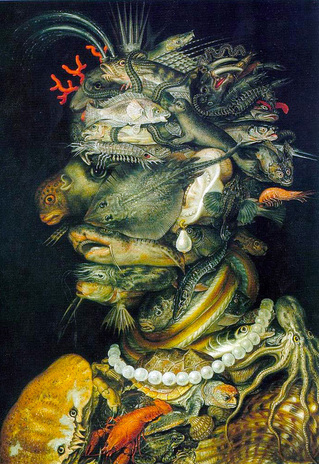 Arcimboldo's traditional religious works have mostly fallen into oblivion, but his portraits of human heads made up of vegetables, fruit and tree roots, were surprisingly admired by his contemporaries and remain unique examples of surrealism today. Debates continue as to whether his paintings were purposeful by design or the product of a deranged mind. Many art scholars argue that given the Renaissance fascination with riddles, puzzles, bizarre subject and even metamorphic art (an image of one thing also being seen as a second thing) that he was simply following his own interpretations of poplar trends.
We Three... that's what we call our little family. Traditionally, we keep our Thanksgiving feast for our little family unit. We are thankful for each other, for our health and happiness, and for keeping us safe in our home in the country which we've dubbed "Buddleside".
When we were young, both Lisa's family and mine used to go all out, serving essentially two meals--the Italian and the American Thanksgiving spread. When arriving at the family home, we'd dig into antipasto. Then after a couple of hours of food prep, teasing each other and watching the parade on TV, we'd sit down for the Italian meal: Lasagna or home made ravioli served with meatballs, brasciole, and sausage. After this, we'd all need couch time to digest--a couple of hours. Then would come Turkey Time. Turkey, stuffing, gravy (the brown American kind, not the Sunday Gravy red type), sweet potatoes and marshmallows, cranberries--the jellied, canned type for my family. Then later on, my Dad would roast the chestnuts in the oven, Mom would pour the coffee and tea and we'd head back to the table to dig into the spread of Italian pastries: Cannoli, Babà al Rhum, Eclairs, Napoleone, Sfogliatelle, Tricolori (Rainbow cookies), Amaretti (macaroons) and my favorite, Pasticiotti (we called them "Passa-Chutt"... little custard filled pies). The chestnuts, pumpkin seeds, tangerines and pomegranates would finish off the day of feasting with sips of almond flavored Amaretto (almond) or Sambuca (anise) liquors. I have no idea how we ate so much damned food back then. For We Three nowadays, the meal is still abundant, but trimmed back a lot--yet still we have tons of leftovers for other meals). We start with an antipasto to honor our Italian roots, but we really have that as our lunch around 1pm. Provolone, salami, imported olives, pepperoni and slices of crusty bread are more than enough to hold us over while the turkey roasts in the oven in the afternoon. Some of the sides we prepared the day before just so we could have time to relax with each other, play a board game, watch the Macy's Parade, the Dog Show and March of the Wooden Soldiers on TV (we love Laurel and Hardy). In the last few years, due to the odd marathon programming of cable channels, tuning in for our favorite parts of the Godfather trilogy is also something that Lisa and I enjoy, though I must admit, watching guys getting whacked on Thanksgiving Day strikes me as very odd. As for the leftovers: Perhaps a second turkey dinner, turkey panini, turkey pasta, turkey barley soup, and our special, once-a-year pizza, which I call Thanksgiving Day Pizza. The turkey gravy (the brown stuff, not Sunday Gravy red) becomes the pizza sauce, the turkey and all the trimmings (cheese potatoes, cranberries, stuffing, etc.) become the toppings, all topped off with grated fontina cheese. Hey... I just looked at the time as I'm writing this on the Saturday after Thanksgiving. I've got to get my dough started for the pizza tonight! I've been waiting all year for this... Happy Thanksgiving to all our Grand Voyage Italy friends! --Jerry, Lisa and Lucas (Happy Thanksgiving to Your Family!)Lisa, Lucas and I are thankful for each other, our health, our home, our friends, the good food and wine God graced us with, the beauty of nature... and we're also thankful for the visits of our Grand Voyage Italy friends. We are blessed with the fruits of our garden, the wide variety of trees growing around us, the sightings of turkeys, racoons, eagles, hawks, frogs and deer. We are blessed also with the warmth of our new fireplace, the music that surrounds us, the coziness of our beds, and the creations from our cucina that grace our table.
We treasure memories from our lives past and look forward to our future adventures together, hopefully in visiting La Bel Paese once again, perhaps visiting the many Finzi cugini we have met on our Garden of the Finzi Famiglia page on Facebook. Most of all, we are thankful for the Creator and all the wonders he has given to us all on this beautiful, big blue marble of a planet... We all hope you are having the very best Thanksgiving ever. Felice Ringraziamento tutti! --Jerry, Lisa and Lucas Finzi Matteo Stucchi (@idolcidigulliver) is a 23 year-old pastry chef from Monza, Italy, who builds surrealistic scenes using food and scale railroading vehicles and people. A modern day Gulliver might be pleased with the people of Lilliput creating such tasty sweets for him to indulge in. Enjoy the slideshow... 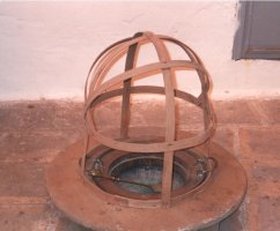 A scaldapanni ready to dry damp socks A scaldapanni ready to dry damp socks Although there might still be a few homes in rural Italy where the fràscere or braciere (brazier) might be found, this tool for heating and cooking is more than likely a memory for older Italians. Typically an ancient-looking copper pan set into a wider wooden base, many recall their mothers placing the braciere full of hot coals from the home's fireplace into the middle of the room so all members of the family could sit around warming their feet on a cold winter's evening. Some have shared memories with me: Mama putting large black olives in to heat them up, and then squeezing them onto pieces of toasted bread... or melting pieces of cheese on forks. They also remember how their fathers warmed up some zuppa for an evening snack before heading off to bed. A second braciere might have been placed in their bedroom to take the chill off as they drifted off to sleep. And their mothers may well have covered the braciere with a scaldapanni (or sciuttapanni)--a dome cover made from bent strips of wood--and then draped a damp washcloth, panties, socks or a cloth diaper to dry overnight. In school the next day, there might have been a braciere--perhaps more than one--sitting on the floor between desks to help warm their scholastic endeavors, even if just to toss a crumpled mistake into the coals when their maestra was dissatisfied with their work.  A beautifully decorated braciere from a more ancient time A beautifully decorated braciere from a more ancient time The "conca" (basin), as it was casually referred to, was an ancient household invention thousands of years old that could be perceived as a sure sign of poverty in Italy, but there were riches in its use, too... family members--young and old, children through grandparents-- gathered around, telling stories, sharing gossip, knitting or repairing garments, toasting bread, laughing together, the children always being the closest to the warm, glowing circle. Occasionally, a lemon or orange peel was tossed onto the coals to send a simple but glorious scent into the air and if you were a good child, your father might let you use the little shovel to perk up the glow of the coals. The family hearth might have been small, but the memories were warmer than that pile of coals could ever be... --Jerry Finzi Copyright 2016, Jerry Finzi/Grand Voyage Italy - All Rights Reserved
 Waffles are something we enjoy almost every Sunday for colazione (breakfast). Lisa has a great recipe which includes egg whites that makes that light and crispy. Lucas' favorite breakfast is waffles with Nutella and banana. But the ancestor of our favorite waffle is something much more delicate... more like a waffle ice cream cone... the pizzelle. (We'll use the name "pizzelle" in this article for both singular and plural--singular is actually pizzella). "Pizze" is from the Italian word for "round" and "flat" (pizze)--yes, just like the word pizza. The "elle" ending means small. Pizzelle are indeed small, flat and round. They are light and crispy Italian waffle cookies made from flour, eggs, sugar, butter or oil, flavored with vanilla, anise, anisette, lemon or even chocolate. Depending on how they are made, pizzelle might be soft or crisp. Pizzelle are made by cooking batter in between two iron plates that have decorative patterns on them--usually in a sort of snowflake design. There are electric versions that are used just like waffle irons, and there are cast metal ones that you hold over a flame to cook the pizzelle, turning to cook each side. The interesting thing about pizzelle is that when they first come off the iron, they are soft and pliable. You can actually mold them around a tube to form a cylinder used in making cannoli, a cone shape for gelato cones or mold them into bowls or cups to be used as containers for sweet treats and desserts. Once cooled they become hard and brittle. They can be colored (like the Italian flag, for instance) with food coloring, or dipped into chocolate or icing and sprinkles. The simplest way to serve them is dusted with powdered sugar or cinnamon and sugar. Tuck them into a scoop or two of ice cream in a bowl. Two can be filled (Nutella!) like a little sandwich. Around the holidays, packaged pizzelle can also be found in many varied flavors and designs.  7th Century bread stamp 7th Century bread stamp Pizzelle--at least, the Italian version we know today--were originally made in Ortona, in the Abruzzo region. Centuries ago, the families would have pizzelle irons specially made with family crests, special dates, or other celebratory designs. Although once enjoyed at annual festivals, these cookies can now be found at nearly every holiday celebration, in Italy and beyond. Other countries have their own pizzelle type of cookie, too... like the Norwegian Krumkake. This is perhaps because it is one of the world's oldest cookies--it's ancestor most likely was the Roman crustulum, a flat bread treat cooked in a Roman pancake pan and on top of a craticula (a sort of Roman BBQ grate cooker). Pizzelle are known as ferratelle in the Lazio region and in Molise they may be called ferratelle or cancelle. The history of pizzelle might go back even further in history, however. There are ancient examples of bread stamps--some being a similar size to modern pizzelle--in both ancient Rome and Greece. Flat breads throughout the Middle East and the Greek and Roman areas of the Mediterranean were often stamped in geometric patterns. Some stamps were small but used in a repeating manner to create a large pattern on the face of a flatbread. The larger ones in the early days of Christianity were used to impress flat breads with a cross or religious pattern, the bread being used as the Holy Eucharist during early masses. St. John Chrysostom (a Greek, 347-407AD), noted in his writings that all bread was “sealed”, most likely with a cross.  Pizzelle Recipes Pizzelle - made with olive oil Makes 2-3 dozen Ingredients 1 cup sugar 1/2 cup light olive 3 eggs 1/2 tsp Salt 1 tbsp Grated orange zest 1-1/2 tsp Flavoring extract (lemon, rum, almond, vanilla, or anise) 3-1/4 cups all-purpose flour Directions In a large bowl, beat together sugar and olive oil. Add the eggs, salt, zest, and extract then beat well. Gradually stir in the flour until the mixture is smooth, soft and sticky. Heat the pizzelle maker. Using a spoon, scoop some dough and place the dough on each cookie pattern of the pizzelle maker. It might help to wet your hands and roll a tablespoon sized dollop into a ball and then center it on the pizzelle iron. Close and clamp the lid and cook until about 30 seconds until light golden color. I have found that many pizzelle irons/griddles tend to squeeze too much batter forward (due to the rear hinge design)... compensate by positioning your batter slightly to the rear of center. Use a thin wooden spatula to remove the pizzelle from the griddle. Transfer pizzelles onto a cool counter-top or cookie cooling rack to dry and harden. Repeat until all the batter is used up. If you need to mold them into a shape, do it immediately as they come off the griddle. Do not leave pizzelle out on damp, humid days. After drying, they keep well in Zip-loc bags. Pizzelle - with butter Makes 2-3 dozen. Butter will add flavor but they will be less crisp. Ingredients 3 eggs 3/4 cup sugar 1/2 cup unsalted butter, melted and cooled 1 teaspoon vanilla 1 teaspoon Cointreau or Triple Sec (or Liquor of your choice) 1-3/4 cups flour 2 teaspoons baking powder Directions In a large bowl, beat together the eggs and sugar. Add the butter, vanilla, and Cointreau. Add the flour and baking powder and mix until combined. The batter should be thick. Chocolate Pizzelle (Makes 30 pizzelle) Ingredients 2 cups flour 1 teaspoon baking powder 1/2 cup unsweetened cocoa powder 1/2 cup unsalted butter, melted and cooled 1 cup sugar 3 eggs, room temperature 1/2 cup milk 1/2 teaspoon vanilla Directions Sift the flour, cocoa and baking powder in a small bowl. In a second bowl, whisk the butter and sugar together, then add the eggs, milk, and vanilla and whisk. Add the cocoa/flour mixture and mix until smooth. Make pizzelle the same way as previous recipes.. Pizzelle with Hazelnuts Ingredients 4 eggs 1 cup sugar 1/4 teaspoon salt 1/2 cup unsalted butter, melted and cooled 2 cups flour 1/4 cup unsweetened cocoa powder 1/2 teaspoon cinnamon 1 tablespoon baking powder 3/4 cup ground hazelnuts Directions In a bowl, whisk together the eggs, sugar, and salt, then add the butter and blend well. Sift together all the remaining ingredients, except the hazelnuts. Add the flour mixture into the egg mixture. Next, fold in the ground hazelnuts. Make pizzelles as previously. Almond Pizzelle Follow the recipe for the Butter Pizzelles above. Leave out the vanilla and Liquor flavorings. Add 1 tablespoon of almond extract or 2 tablespoons of amaretto. Add 3/4 cup of ground almonds to the batter. Cappuccino Pizzelle Follow the recipe for Pizzelles made with butter. Omit the vanilla and Cointreau. Then add: 2 teaspoons instant espresso powder 2 teaspoons cinnamon 2 tablespoons coffee liqueur Serve with a dollop of whipped cream shaved chocolate top top it off. Black and White Pizzelle Follow the Butter Pizzelle recipe. Make one batch of the Chocolate Pizzelle recipe. Place 1/2 tablespoon of each batter, side to side in the middle of the pizzelle baker's pattern and bake as usual. --Jerry Finzi If you enjoyed this article, please SHARE it and LIKE it on your favorite social media site. Buon Natale! We also have pages on: Google+ StumbleUpon Italy is much more interesting than just going there to check off "must see" tourist sites from a list. And there's more than one way to take a Voyage around the country. In a country shaped like a boot, surrounded by crystal clear seas on three sides, filled with volcanic activity in both the people and geology, and with architecture that goes back hundreds if not thousands of years... and being the birthplace of the world's most favorite foods--pasta and pizza--well, this place makes for one hell of a visit... from space on Google Earth.  First, take a look at this straight looking shape jutting out over half a mile into the Adriatic Sea at Trave, Italy? It looks like a man made jetty with boats anchored on the leeward side. Well, it's not man made. It's a natural geological formation--a angled uplift of layers of ancient seabed that you can see in the second photo going straight op the mountain. The effects of vulcanism in Italy are amazing to see. What do you think these strange arrow shapes are that I came across on Google Earth while trolling around Trevignano, Viturbo on Lago di Bracciano? They are an interesting type of fish trap called an arrowhead trap. Fish swim toward shore, then when they swim out to deeper water again, they get trapped in the arrowhead. They look very cool when seen from above.  How about these circular shapes I found just off the southern coast of the Gargano Peninsula in Puglia? Yep... floating fish farms. This wasn't planned.... or was it? Looks like a bull dog puppy staring into the eyes of his master.  I wish we were seeing more of this next one in the States. This is one of the largest solar power plants in Italy. It's almost a mile long and produces 70 megawatts, enough to power over 16,500 Italian homes. Why aren't we doing this here in the U.S.? Everyone knows what this shows... snow on mountaintops, right? Wrong. This image shows mountains entirely made of white marble, just outside of Carerra where Michelangelo found David hidden in a huge hunk of the stuff. Another jetty? No... it's actually a shipwreck, left there to rust. Italy has a decent number of these wrecks making their coastline much more than just a place to lay out in your Speedo. This is the Italian Space Agency's radio telescope field in Ortuccio in Abruzzo, but Google Earth shows the importance of this complex. Built in 1963, the Fucino Telespazio Center contains over 100 working dish antenna radio telescopes. I was checking Google Earth for the location of a museum in the town of Mantova (also, Mantua) in northern Italy when I saw this sight. Mantova is a town with three man made lakes surrounding it (built as protection in the 12th century). In one of the lakes is this mile long leaf shape. It's the Isola del Fior (Flower Island), not an island at all, but a one mile long bed of water lilies. This one is a shocker. I knew where it should be, but I didn't know Google Earth actually had an image of it.... Here's the Costa Concordia laying on it's side, as view from space. AMAZING! And now, how about a little salt on your steak? Sea salt, that is. Yes, these are salt drying marsh pens in Trapani, Sicily. They flood the fields with seawater and let the sun do its work. Now this one is one of the oddest things I've found on Google Earth. Believe it or now, this huge pattern is concrete--covering the ruins of an entire town that was destroyed in an earthquake. The artist entombed household items--dolls, beds, chairs, tables--in this web of concrete. The really strange thing is, the pattern are actually the old streets where people can visit and wander through this oddity. Read more about Cretto do Gibellina HERE. Then there is this strange, pie-sliced pattern, looking very much like an interesting pizza. This is the town of Cerignola, in Puglia. I find it fascinating the way they've developed the roads and farmers' fields into this radiating pattern. It reminds of how Washington DC's avenues or the les Grands Boulevards in Paris radiate out from a central point, like the Etoile. Very cool. In the end, this one gets my vote as the absolute strangest sighting found on Google Earth: The giant white rabbit in the Italian Alps. An art installation on a mountaintop, it has suffered the ravages of the Alpine extreme weather--along with and hikers and skiers climbing all over it. The current Google Earth image shows a mere road-kill outline of the bunny's former self. I hoped you enjoyed this bird's-eye view of la Bel Paese...
--Jerry Finzi I've always loved coconut and chocolate. Mounds candy bars were a favorite when sitting in the dark, echoing movie palace during Saturday matinees in my youth. In Italy, one of my favorite, two-scoop gelato treats was coco and cioccolato. So when my wife, Lisa made these Coconut Chocolate Squares for me last week, I was in heaven!
Ingredients
Directions
My wife, Lisa was making a surprise one recent Sunday morning for breakfast--some sort of German oven baked "pancakes". What we got on our breakfast plates was a 1" thick, gelatinous, rubber-textured, tofu-like squared portion. As our forks entered our mouths, simultaneously, our facial reactions were the same. Yuck! While they were edible--only after over-dosing with maple syrup--none of us could stand their rubbery texture, like stale Jello with lots of eggs. Lisa was beside herself, but not wanting her to feel bad I kicked into action with a very quick, impromptu rendition of eggs in purgatory.... for of course, purgatory is where all great cooks (my wife is a great one) go for penance after indulging in such a culinary sin. This isn't a formal recipe, but more of a quick guide for a tasty breakfast using simply pantry ingredients--and no real recipe. I quickly got out 6 eggs, heated up a fry pan with drizzle of olive oil and turned on the oven to broil. Next, I poured enough tomato sauce (we always seem to have some) to cover the entire surface of the pan about 1/4" deep. I then broke the eggs into the bubbling sauce and salted, peppered and sprinkled them with dry basil. After a few minutes when the eggs looked like they were cooked on the bottom, I placed the pan into the oven for about 2 minutes. I popped some slices of ciabatta into the toaster. Lisa got new plates while Lucas cleared the table of the rubbery pancake remains, and then I plated. Two slices of bread on each plate, an egg and some sauce on each, and for a finish I shaved some Reggiano and topped off each serving.
Presto! Breakfast saved. Babbo is a hero and helped Mama save face (such a lovely face)... and I'm happy to report that she returned from purgatory to her righteous heavenly place in our hearts--and our kitchen. Buon appetito! --Jerry Finzi In the small Sardinian town of Nuoro, there are a very few women (you might count them on one hand) who still know how to make what many say is the rarest type of pasta in Sardinia Italy and perhaps the whole world... Su filindeu, in the Sardinian language. In Italian it is called Fili di Dio, which can be translated as either Wires of God or Threads of God. Filindeu is tied to a religious ritual celebrated in the region of Nuoro. Oddly, this celebration is tied to a murder in the year 800 AD. Accused of murder and being hunted down for his crime, a young man claimed innocence and took refuge in a cave about 15 miles from Nuoro. He was discovered, brought to trial and miraculously (to him) declared innocent. He had prayed to Saint Francis during his time of refuge in the cave and thus built a shrine in the cave in honor of his patron saint. Every May 1st and October 4th, there are processions to the cave and shrine followed by a celebratory feast of filindeu. The dough to make this special pasta is durum semolina, water and a bit of salt. It is then kneaded for a very long time to stretch the gluten, making it very soft with amazing elasticity. The dough is rolled by hand into 8 long, thin snakes, which are folded, halved and pulled, only to be folded and stretched again--32 times in total--resulting in 256 thread-like thin bundles of parallel groups of pasta. These threads are then stretched across a large, flat tray called a fundu, traditionally woven from leaves of the local asphodel plant (a member of the lily family), often used in basket-making. To aide in the stretching, the dough is occasionally dipped in salt water--the timing of this sensed only by the experience of the artisan making the pasta. This process is repeated until a single layer of "threads" cover the entire fundu. the basket is then rotated by about 60 ° with another layers of pasta "threads" laid down. This is repeated a third time creating three criss-crossed layers of "threads". The tray is placed in the sun to dry causing the three layers to stick together while creating a stiff fabric of pasta looking very much like a course textured cheesecloth.  For the feast, the filindeu is broken into pieces and put in boiling mutton broth. Grated pecorino (sheep) cheese is added to complete the soup. I don't know about you, but I've always loved my soup loaded with noodles... If you're ever in Sardinia, look for packages of filindeau shards. Some have realized that this is a real Sardinian treasure and are trying to expand the availability of this pasta. --Jerry Finzi “Travel is fatal to prejudice, bigotry, and narrow-mindedness, and many of our people need it sorely on these accounts. Broad, wholesome, charitable views of men and things cannot be acquired by vegetating in one little corner of the earth all one's lifetime.” ― Mark Twain, from The Innocents Abroad/Roughing It 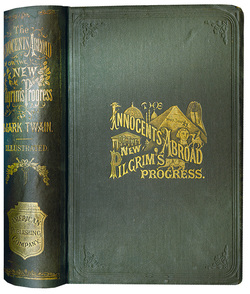 Mark Twain, aka Samuel Clemens, first visited Italy in 1867 in what he called "the first organized pleasure party ever assembled for a transatlantic voyage". In 1869 he published The Innocents Abroad, a detailed account of a six month long journey through most of Europe and the Holy Land. In 1867 Italy was already a unified country, with the sole exception of Rome and Latium, which were still ruled by the Pope.  The quotation above is still true today. As we travel the world--especially as Americans--we are rightfully humbled by the majesty of thousands of years of history, art and architecture. We realize that Europe, and even Italy itself, are the original melting pots. When traveling we open our eyes to different customs, lifestyles, religion and even food. If you take the time to learn another language, you will open yourself up to even more of what the world has to offer... So, if you find yourself "vegetating in one little corner of the earth", take Twain's advice. Travel. --Jerry Finzi "They examine passports on the Italian frontier for fear an honest man may slip in." --Twain, 1878
|
Categories
All
Archive
June 2024
|












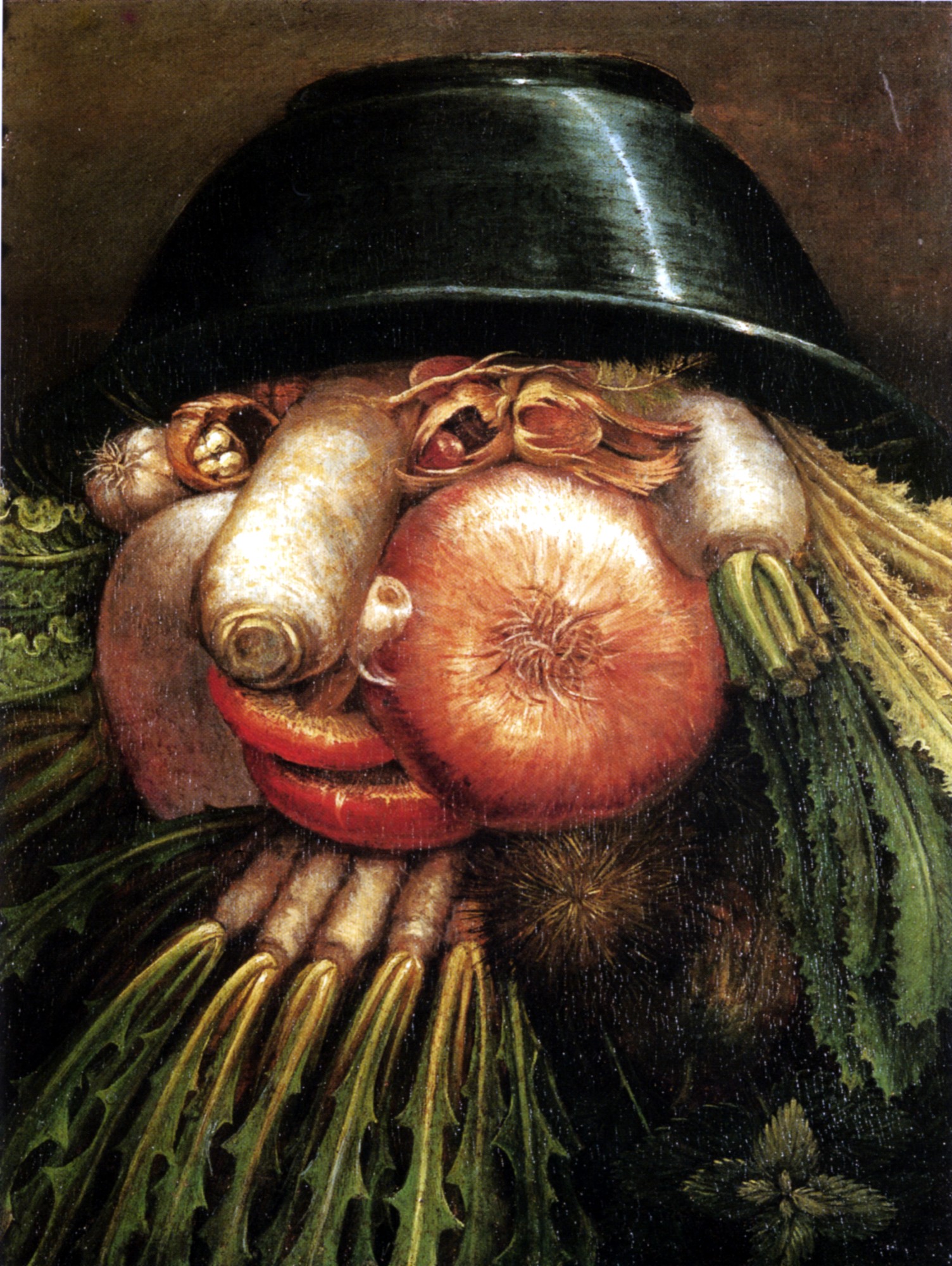


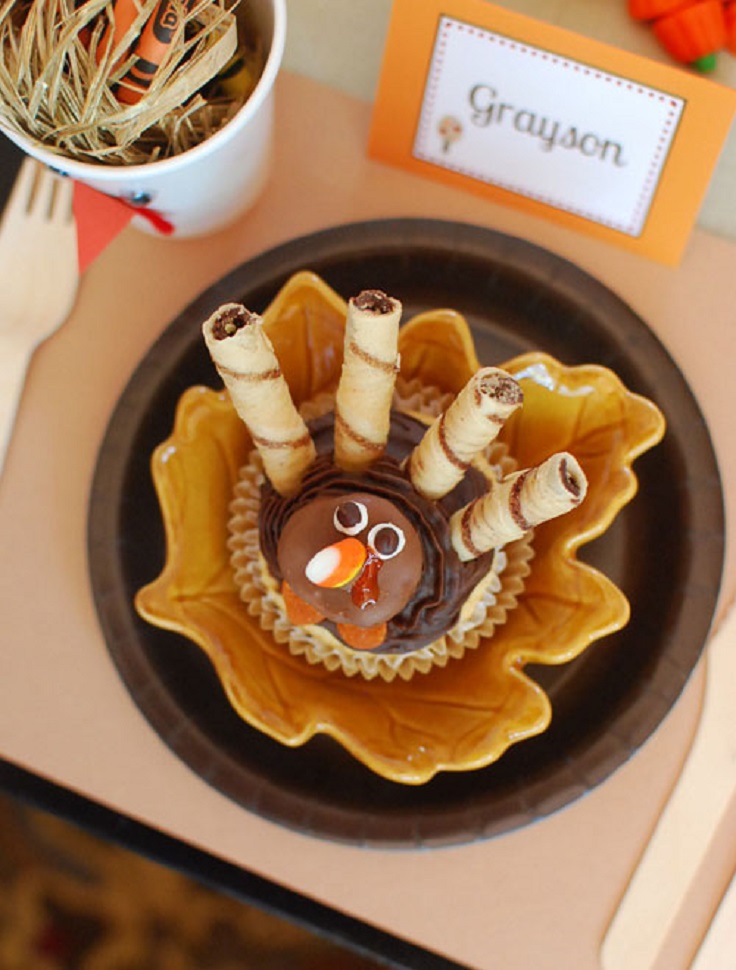

























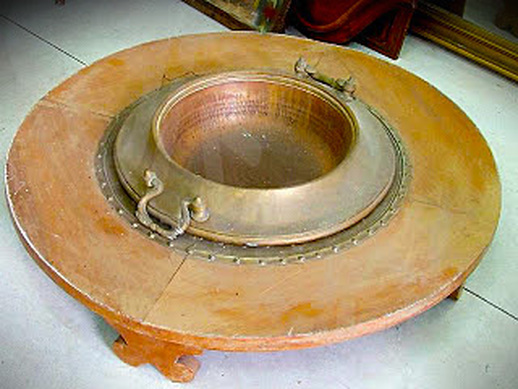








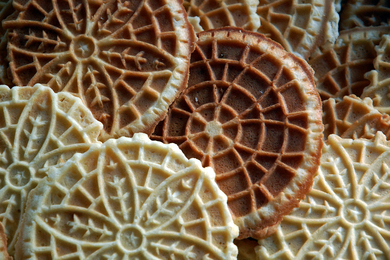






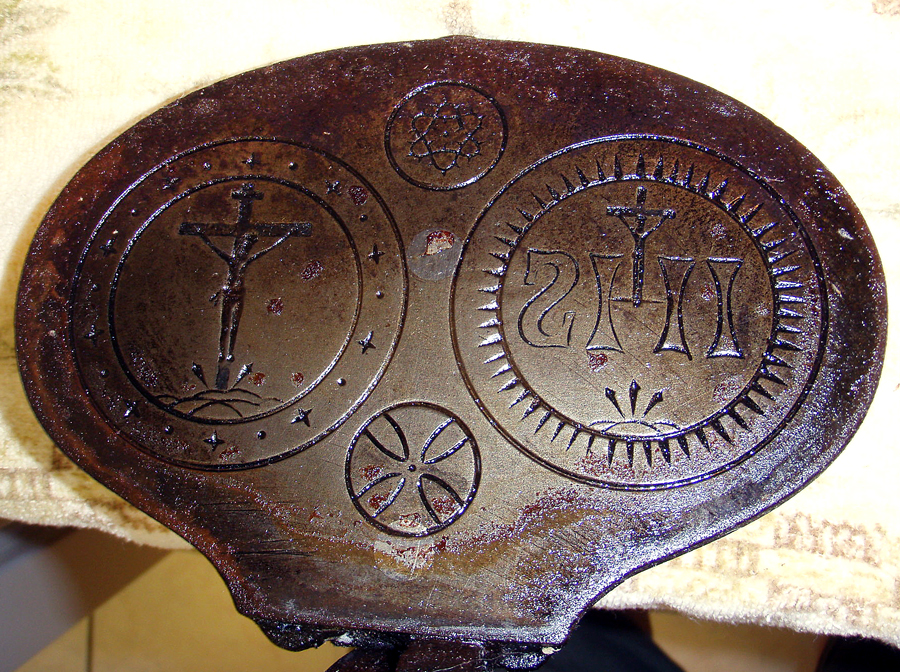


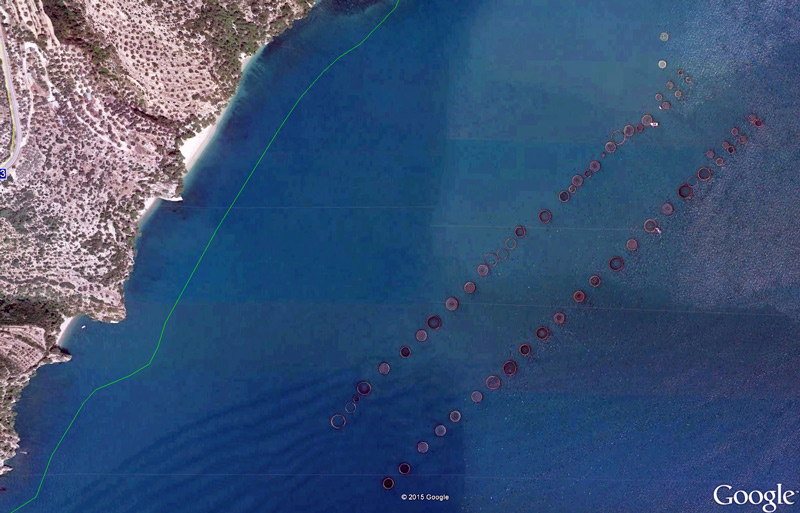













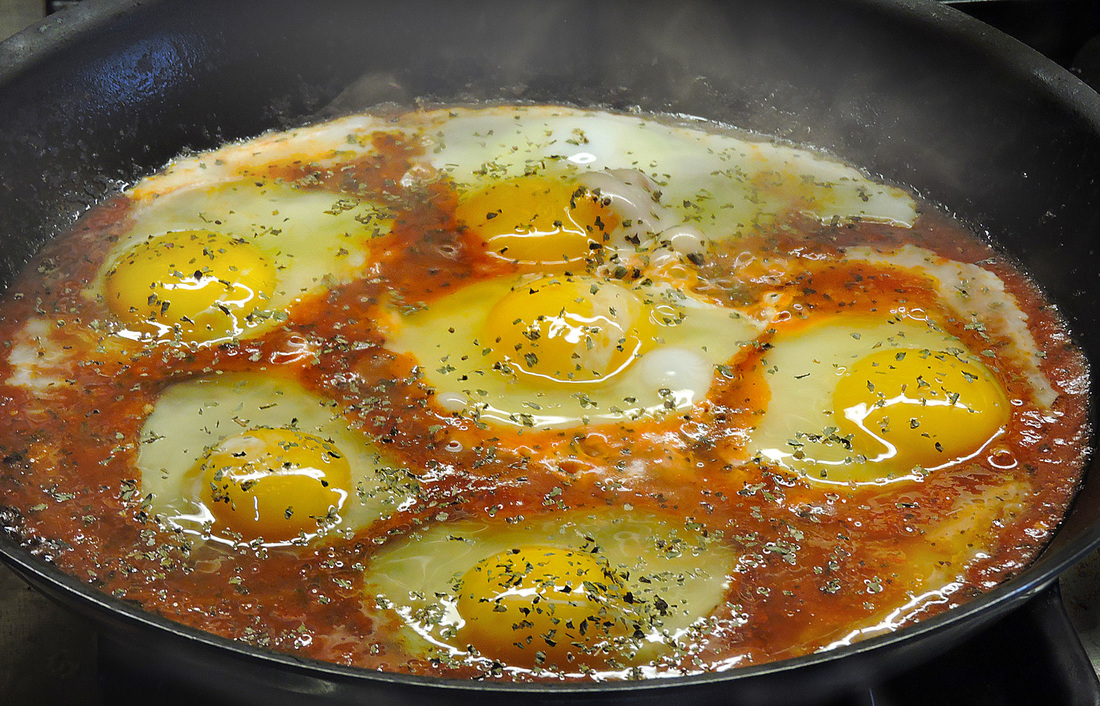










 RSS Feed
RSS Feed
